There’s no Z28 Camaro anymore – but it’s hardly necessary, if you want to go fast. The standard Camaro – with a four cylinder engine – outperforms the V8 Z28s of the ‘60s and ‘70s.
And if that’s not enough, there’s always the V6.
What It Is
Chevy’s almost-Corvette, with two more seats – and a much lower price tag.
The base 1LS trim stickers for $25,000 and comes standard with a 275 horsepower 2.0 liter turbocharged four cylinder engine, paired with a six-speed manual transmission. An eight-speed automatic is available optionally.
Moving up to the 1LT trim – which stickers for $25,500 – gives you the option to upgrade to a 335 horsepower V6, also paired with a standard six-speed manual transmission.
And if that’s not enough, there’s the SS – which stickers for $37,500 to start. It comes standard with a 6.2 liter V8 (shared with the Corvette) that makes 450 horsepower, once again paired with a six-speed manual transmission.
But for some, even that is not enough.
In which case, Chevy offers a supercharged version of the 6.2 liter V8 that makes 650 horsepower – in the $63,000 ZL1.
Convertible versions of all are available as well.
What’s New
An upgraded version of AppleCarPlay/Android Auto is now available.
What’s Good
Four cylinder Camaro is quicker than most classic-era V8 muscle cars – and twice as economical.
V6 Camaro isn’t a killer to insure.
V8 Camaro is a killer, period.
What’s Not So Good
All Camaros have poor outward visibility due to chopped roofline.
Back seats have five inches less headroom than up front due to the chopped roofline.
All Camaros have less room for cargo than the Corvette – which only has two seats.
It is a measure of how good we have it right now that the base Camaro’s engine – a turbocharged 2.0 liter four – makes almost as much horsepower (275) as the original 1967 Camaro Z28’s “high performance” 5.0 liter V8 (290) did.
More horsepower, actually – because back in ’67, horsepower was advertised differently. More optimistically. Using what was then known as the “gross” method – which meant measured with the engine on a stand, not saddled with accessories and a production exhaust system with mufflers. Using the “gross” standard, the new Camaro’s four would have rated well over 300 horsepower back in ’67.
And no matter how you measure it, the four gets much better gas mileage: 22 city, 31 highway with the six-speed manual and slightly better with the optional eight-speed automatic. In ’67, the Z28 came only with a four-speed manual – and it was a lucky day if you managed 16 MPG . . . on the highway.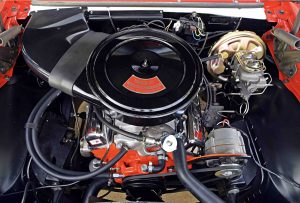
The new car also gets to 60 in 5.4 seconds – about one full second quicker than the original ’67 Z28.
With the optional 3.6 liter V6, a Camaro is even quicker. Zero to 60 in about 5 seconds flat, which beats every V8 powered Z28 made from 1967 all the way through 2002. There is almost no penalty to pay – at the pump – for choosing this engine, which is almost as economical to operate (19 city, 29 highway) as the four.
Then there’s the 450 horsepower V8-powered SS. It is not almost as economical to operate as the four – but it’s not terrible, either. In fact, 16 city, 24 highway is pretty good for a 6.2 liter V8 that can get you to 60 in just under 4 seconds.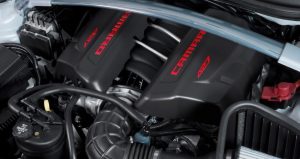
Finally, there is the 650 horsepower supercharged version of the same engine. This one makes more than twice the power of the original 1967 Z28’s “high performance” 5.0 liter V8 and gets to 60 more than twice as quickly – and still gets better gas mileage than a ’67 Z28 did.
Plus, it comes with AC (the ’67 didn’t even offer it).
As bad as some things are right now, in some ways we have never had it this good.
On The Road
Driving a ’67 Z28 was a full-time-and-attention situation – and so is driving the 2021 Camaro.
The ’67 was easy to see out of – and hard to drive. The ’21 is easy to drive – and hard to see out of.
The Camaro – whether you pick the four or the six or the eight – is a powerful and easygoing car; the ’67’s engine was high-strung and erratic, because it wasn’t really meant for the street. It was meant for SCCA road racing – where the engine is always revving and you’re constantly shifting. The new Camaro’s engines can be raced – but are as at-home on the street (and in traffic) as what you’d find under the hood of a Corolla or Civic.
Also fun is that you can still get the Camaro with a manual – with any engine – which is also becoming a rare thing, even in performance cars. Many exotics are now automatic-only, in part because so many people under 40 can’t drive stick and also because objectives now trump intangibles. A given car with an automatic is generally quicker – and more predictably quick – than the same car with a manual. Electronics – launch control – and perfectly timed (by the computer) automatic shifts deliver better ETs than a human-shifted manual and make it easier to be quick, every time.
Objectively, the automatic is superior. It never misses a shift. It always shifts at exactly the right moment in a zero-to-60 drag race.
The manual is more intangibly enjoyable. Especially with the 3.6 V6 engine, which can be and likes to be spun to its 7,000 RPM limit. It’s arguably the sportiest of the three choices, especially if you like to shift for yourself.
Surprisingly – because it’s historically counterintuitive – the standard 2.0 liter four works best with the optional eight-speed automatic.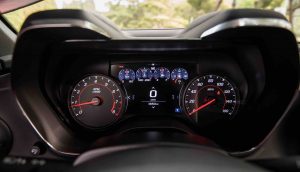
Historically, fours – especially in heavy cars – did not work well with automatics. They lacked gumption in the lower RPM ranges and so struggled until you got them revving, which of course is hard to do with an automatic transmission when you’re starting out from a dead stop. But the Camaro’s 2.0 engine (like many of its type) is a down-low engine, in the good sense of that term – because of the turbo bolted to it. Which spins – and boosts – so the engine doesn’t need to.
Peak torque – 295 ft.-lbs., which is more torque than the V6’s 284 ft.-lbs. – is available at 3,000 RPM rather than 5,300 RPM (for the V6) and this makes it ideally suited for use with the automatic, which works better with engines that produce abundant low-RPM torque. They have a torque converter that amplifies the low-end grunt – and that’s why torquey engines and automatics work well together.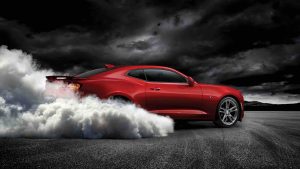
Same goes for the V8, which makes even more torque. The SS can lay rubber at will – even when the Camaro is already rolling. It is great fun to begin a burnout at 25 MPH. Just take it easy at first – until you get used to just how much torque is on tap. The SS Camaro’s 455 ft.-lbs. of torque makes it as easy to get sideways as thinking about it – which is also big fun, assuming you’re ready for it.
You can also leap over Priuses in a single bound, almost.
But, there is a hair in the soup and it is the current Camaro’s horrendous outward visibility, especially to the rear and sides – because of its very low roofline and abbreviated side/rear glass. You sit low, almost as if in a tank – think of the Brad Pitt movie, Fury. Make sure before you pull out into traffic.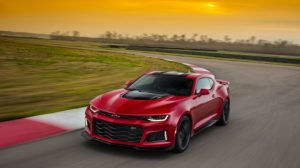
Or change lanes.
The car is also very wide – 74.7 inches vs. 72.3 for the ’67 – and while that doesn’t sound like much on paper, on the road – especially narrow country roads – it feels like a lot of Camaro to keep in between the painted lines. The obnoxious Lane Keep Assist will rattle you constantly because it is almost impossible to not tread on one or the other painted lines in a car this wide.
But this is a Camaro you can drive to work every day – which is something classic Camaros like the ’67-69 Z28 were not. This includes even the ZL1, which has more power under its hood than two ’67 Z28s had under theirs – and performs like an all-out race car while managing to be almost as economical to drive as a V6-powered family sedan.
If only GM made more cars like this one.
The new Camaro is also a long car. It is 188.3 inches bumper to bumper – about four inches longer overall than that first 1967 Camaro, which was 184.6 inches end to end.
But it isn’t a roomy car.
Especially in the back. Muscle cars are notorious for having tight back seats – and the Camaro’s got those, with only 29.9 inches of legroom. But it’s the abbreviated headroom that makes the back seats for gym bags only. The car’s roofline chops the available head space down from a viable 38.5 inches for the driver and front seat passenger to a hopeless 33.5 inches for the people tucked in (literally) the back.
The ’67 Camaro had 36.7 inches of headroom in the back.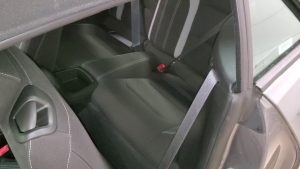
In Camaro’s defense, the also swooped-roof’d Ford Mustang is almost equally passenger-impaired, with just 34.8 inches of headroom in its backseats. The Mustang does, however, have a decent-sized (13.5 cubic foot) trunk while the Chevy has a practically vestigial 9.1 cubic foot trunk.
A Corvette has 12.6 cubic feet of cargo space and in that respect is more practical than the four-seat (sort of) Camaro.
Of course, practicality is a tertiary consideration when considering a car of this type. The primary consideration being what it does for you emotionally, which encompasses the visuals as much as the mechanicals which blend together into those intangibles that make – or break – a car of this type.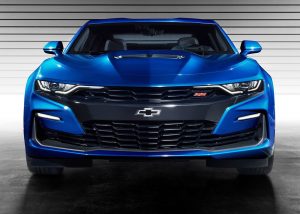
Camaro sells well in spite of its ridiculous back seats and horrendous outward visibility issues – which says something about the strength of its intangibles. Some people hate this car- but that accounts for why so many love it. The thing is not meant to please everyone and so greatly pleases some – and that is how you keep the fire burning.
The Rest
Performance upgrades are available with every Camaro, even the base LS with the 2.0 liter four. There is a stand-alone high-performance Brembo brake package on the options list and if you get the V6 LT you can get a Track Package that bundles the Brembo brakes with heavy-duty cooling/suspension and exterior body kit for enhanced high-speed aerodynamics.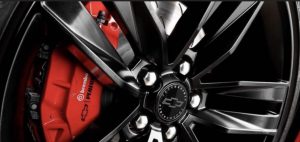
Also – as it was and long has been – there is huge aftermarket support for Camaro. Engine parts, suspension parts, custom interior and body parts. It is possible to make your Camaro unique in a way that is much harder to do with other cars, which haven’t got scores of aftermarket companies making parts for them.
The Bottom Line
1967 is a long way back – but is also available at your local Chevy dealer, brand-new and fully warranted.
. . .
Got a question about cars, Libertarian politics – or anything else? Click on the “ask Eric” link and send ’em in!
If you like what you’ve found here please consider supporting EPautos.
We depend on you to keep the wheels turning!
Our donate button is here.
If you prefer not to use PayPal, our mailing address is:
EPautos
721 Hummingbird Lane SE
Copper Hill, VA 24079
PS: Get an EPautos magnet or sticker or coaster in return for a $20 or more one-time donation or a $10 or more monthly recurring donation. (Please be sure to tell us you want a magnet or sticker or coaster – and also, provide an address, so we know where to mail the thing!)
My eBook about car buying (new and used) is also available for your favorite price – free! Click here. If that fails, email me at [email protected] and I will send you a copy directly!


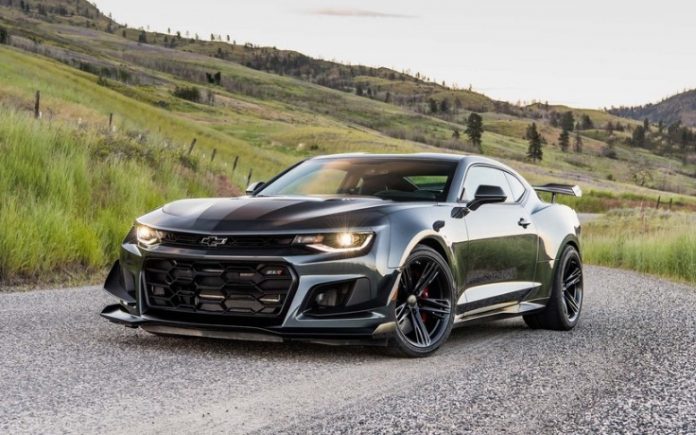

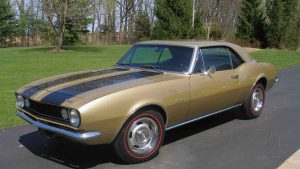

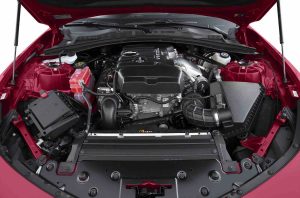
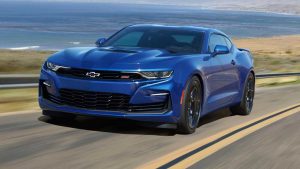
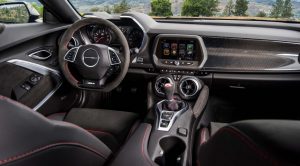
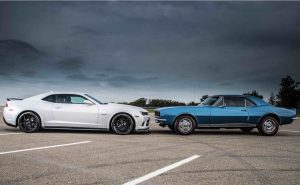








Eric,
Great review. You treat GM fairly despite their treatment of you.
I bought a new V6, manual transmission, Camaro LT3 in April, and despite the well deserved criticisms (lack of cargo space mainly for me), I love it. The V6 has nearly the power my C5 Corvette had, but with a very different character. It revs to the moon, and just begs to be thrashed. The Tremec 6060 transmission is just a “snick-snick” joy to work. Every trip in it is a minor crime spree. All with decent mileage and on regular gas.
The Tremec transmission was why I didn’t go with a Mustang GT. The crappy China-sourced Getrag has a horrible reputation. I even get employee pricing on Fords via my brother, but that wasn’t enough. Ford puts the Tremec in the high-end cars (Shelby, now the Mach 1, etc.), which to me is an admission that it’s superior to the Getrag.
The visibility doesn’t bother me. My fist car was a 1971 Mustang “flatback”, which had the same kind of visibility. And it didn’t have a reverse view camera.
The one change that would make this car an order of magnitude better would be to make it a hatchback. It would be much easier to get stuff in and out of it, and it would be better able to exploit the cargo space it does have. I went to track events with a 1980s Mustang GT, and carried tools, 4 track tire/wheels, a jack, my luggage and so forth in the car. Hatches are just more useful, and I would love to see them come back.
Amen. plus some more text to get the thing to take…
Hey Eric,
The podcast “This is Criminal” just posted a story about Brock Yates and the Cannonball Run; the history and the modern incarnation driven largely by “the Covid” (relatively empty streets).
https://thisiscriminal.com/episode-155-cannonball-12-18-2020
Thought you’d appreciate it.
Cheers,
Jeremy
Seems like every decade or so designers reach a point where their cars start looking like a George Barris design. There’s too much thought put into the details instead of making a nice car. No reason for the chopped roofline at the expense of a useful interior, especially if it compromises visibility. It’s not just GM, Lexus and Audi with their oversized grills, the “angry samurai” look across Asia and the retro-muscle of US. Heck, even the new Jeep pickup is more about style than function. And yet they still all pretty much look alike.
I agree, RK –
The current Challenger is one of the few that really stands out while also being a sensibly designed car – spectacularly so, given what it is.
Those triplets, Challenger, Charger, 300, to me are so awesome for what value they have. Gonna be a sad day if/when FCA is forced to change them to 4cyl turbo’s, and/or radically change them to make them lighter (they are heavy), or they go away completely.
Do you know how they are selling right now, with the exit of so many competitors in that market? Obviously corona is a problem for all. Just curious, cause if they are still selling, it might make FCA think twice, or is it now the fourth time?
In the early seventies, I very briefly owned one of the original 602 1967 Z-28s. I still have a copy of the title. (Do you recall what a pain it was to get a copy of anything back then?)
I found that car about three years ago….in the collection of Reggie Jackson.
Too bad GM fired all their creative designers. Car looks like a Camry knock-off with some extra bends.
Too bad GM has declared war on IC-engined vehicles such as the Camaro:
In a letter from CEO Mary Barra to 11 environmental leaders, she wrote, “We are confident that the Biden Administration, California, and the U.S. auto industry, which supports 10.3 million jobs, can collaboratively find the pathway that will deliver an ALL-ELECTRIC FUTURE.
Barra said GM is “inspired” by Biden’s Build Back Better plan, which looks to expand EV adoption, create one million jobs, install 550,000 charging stations, and “position American autoworkers and manufacturers to win the race for electrification.”
Biden, California and GM “are aligned to address climate change” by reducing emissions, Barra also wrote.
https://www.freep.com/story/money/cars/general-motors/2020/11/23/gm-trump-california-emissions-biden/6394166002/
That’s Mary California, proudly letting her progressive freak flag fly … and shoving her Democratic politics down our throats at gunpoint.
I will never buy another vehicle from our declared corporate enemy, General Motors.
Yeah, also, she didn’t get the memo yet — that cartoon character guy didn’t even get elected, he probably got 10% or less of the votes. He and tons of others committed national election fraud which is extreme treason which is probably a lifetime jail sentence or possibly death penalty. So she and everyone like her are a complete total JOKE and FRAUDS — they are PIRATES / IMPOSTERS / ENEMY WAR AGENTS. I don’t take them seriously at all. And who in their right mind believes this woman is really into cars — not many women are, and just by coicidence the evil pirates are installing women in many power positions everywhere… yet we’re supposed to believe she’s not one of these enemy agents? Pffff.
It’s a shame all the honest engineers & various workers at GM have to put up with this INSULTING CRIMINAL and her INSANE totally destructive policies as their boss. The poor GM employees know that this boss is purposefully trying to bankrupt the whole company, so what will they do for a job when the whole company is ruined? Is the fake govt going to print free money to keep the company afloat while it burns billions on stupid fraud & wastage (like electric cars)? Is that how we want the worlds’ money system to run — all companies trying to commit suicide while relying on govt printed money while taking orders from fake govt agents telling them to do stupid horrible environmentally-polluting things that hurt the public? Really? This GM model is total MADNESS and will DESTROY everyone on Earth.
Lies are truth now. Commies are good for us. So is a shortened life span, I mean who wants to be a slave for most of their adult life anyway.
As for cars…the irony is not lost on me with the maniacal push for EVs. Last I saw, for oil, you just needed to drill deep into the ground and suck it up. For EV batteries, you need to actually dig up the ground, and dig, and dig and dig and dig. Talk about wrecking the earth. But I guess that’s fine for the commienviromentally challenged.
Eric, just curious. I had an ATS Performance package, and while I really enjoyed the car, my problem came on long drives that I felt very cramped in it. Anything over 1.5-2 hours and I was kinda done. I believe these two cars share the same chassis (Alpha?). Did you find the cockpit cramped? Side to side space was my issue, and I’m average build, 5-8, 180lbs. Maybe I’m too used to driving pickups for 20 years?
It also shared the puny trunk. Not a problem for two people on a trip, but no way we’re taking 3 or more to the airport. I traded the ATS on a 300 and was much happier.
Hi Chris,
I’m 6ft 3 and 220 – and yes, the car feels cramped to me; much more than my ’76 Trans-Am, which (ironically) is a much smaller car. But it has noticeably more head and shoulder room.
If I were going to buy a new muscle car, it’d be the Challenger. That one has real back seats and a full-size car’s trunk!